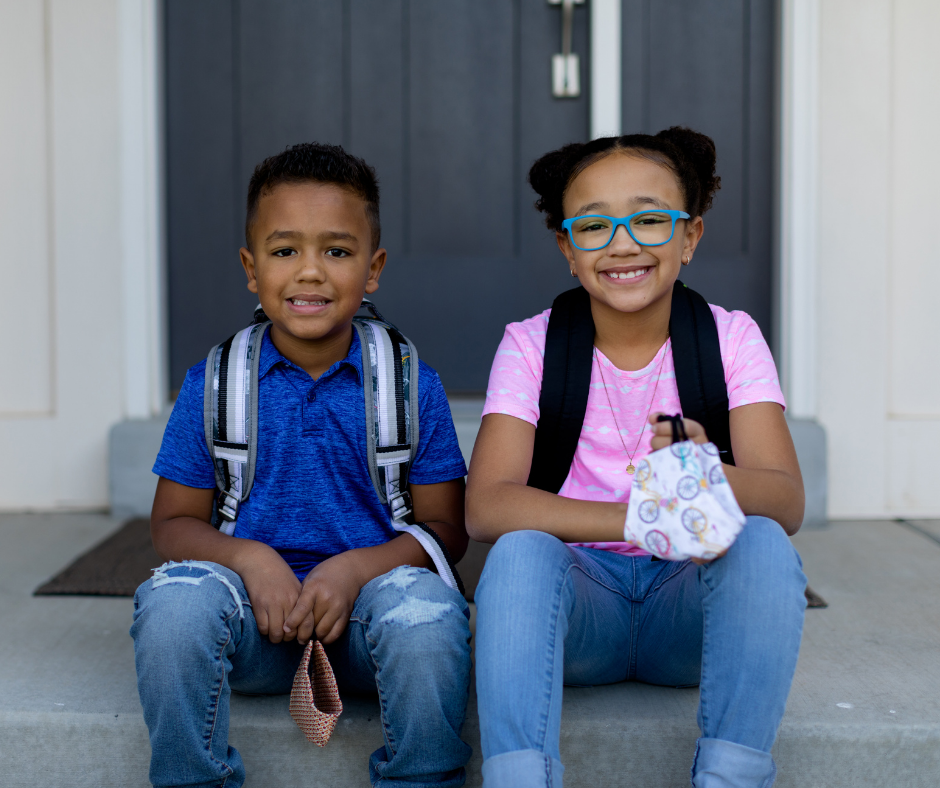The new school year is quickly approaching, and as many students return to in-person classes for the first time in several months, the annual back-to-school steps for caregivers looks a bit different. For starters, the supply list, which used to focus on making sure students had notebooks, pencils, and backpacks, has grown (think masks and hand sanitizer). For many students, there may also be added sources of anxiety to consider.

There are things to do that can help all parents and caregivers make the transition as smooth as possible. Foster Parents who have recently welcomed new children into their homes may need to be extra vigilant when addressing some issues because they are just beginning to become acquainted with one another. However, regardless of how long a child has been in your care, these tips may be helpful.
Personal Physical Safety
As much as we may want to wrap children in a protective bubble that prevents them from germs, learning how to navigate the real world is part of growing up to be strong. Talk with children about the things they can do to stay safe and healthy.
Hand Washing
We’ve all learned the importance of personal hygiene during the pandemic, but since you’re not going to be present while they’re at school, it’s essential to review and practice the proper way to wash hands and to make sure children understand why it’s necessary. Send them off to school with an ample supply of hand sanitizer, but explain that hand washing is always the first choice and sanitizer is to be used when hand washing isn’t possible.
Face Masks
Rules and regulations vary, but children should comprehend how face masks can protect them and how to wear them correctly. Some animated videos show how far a sneeze can travel that some children may find cool depending on a child’s age. Of course, you don’t want to scare a child, but it helps drive the point home. Make sure to pack extra face masks in their backpacks in case theirs gets damaged or dirty.
Physical Distancing
It would be naive to think that children, especially young children, will entirely refrain from touching. Still, explaining why we need to distance from one another physically can at least make them aware of how it helps keep them safe (again, those animated videos of sneezing can help make that point).
Immunizations
Connect with the doctor and case manager to ensure children are up-to-date with all recommended vaccines, including for flu. All school-aged children should get an influenza flu vaccine every season, with rare exceptions.
School Coordination
When you learn who the assigned teachers are, reach out via email or telephone to introduce yourself and the children in your care. Talking with their teachers is also an opportunity to share any information you have if they have Individualized Education Programs (IEPs) or 504 plans. It’s also an excellent time to introduce yourself to the school office staff.
Mental Health
After spending months at home, some children may feel anxious about going to school. For some, returning to the classroom may be a relief, but for others—such as those who have been victims of bullying, have social anxiety, or learning disabilities—remote learning has been beneficial. Returning to school can also seem daunting to young children who are reluctant to leave home and unsure of what to expect.
The pandemic was a collective trauma, and the long-term impact is still unknown. We do know that rates of anxiety and depression have been soaring in children and teens as their usual structure, guidance, and coping mechanisms have been upended. There are some measures you can take to do what’s needed to help children cope.
Keeping a close eye on the mental health and social-emotional wellbeing of children will allow you to provide better the emotional support needed.
Anticipate Some Anxiety and Nerves
Being around people again and having a more structured schedule may increase anxiety, especially for children worried about getting sick. Being able to anticipate them can make it easier to develop ways to help children cope with any anxieties that may arise. Practicing reframing negative thoughts as more positive ones can be helpful to do in advance.
Be on the Lookout for Behavioral Changes
Everyone reacts to stress differently, but some common factors may indicate a child in your care is struggling. Some signals may include sudden or unexplained physical pain; excessive worry, sadness, or fear; and an inability to concentrate or constant distraction. If you notice any of these reactions, reassure children in your care and consider these expert resources to guide you.
How One Family Illinois Supports Its Foster Parents and Children in its Care
On-site caseworkers and therapists at One Family Illinois provide another valuable resource for Foster Parents. Every child living in an One Family Illinois Village has built-in access to a caseworker or therapist whenever it’s needed. One Family Illinois caseworkers and therapists are equipped with the tools to help with difficult situations that enable them to provide timely crisis intervention when and if it’s needed.
Returning to in-person school is a big transition, and just as it took a while to figure out remote work and learning, it will take a while to acclimate to in-person school and the way of life surrounding it.
Learn How You Can Support Our Children’s Education
If you are looking for a way to support our children as they return to school, please check out our Amazon supply wish list for our children’s educational supply needs.